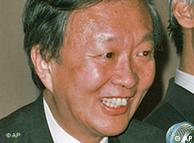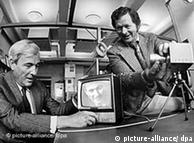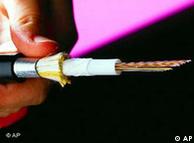TECHNOLOGY | 06.10.2009
"Everyday" physicists scoop the Nobel Prize
Charles K. Kao, Willard Boyle and George Smith have jointly won the 2009 Nobel Prize for physics in Stockholm. They scoop the 10 million Swedish crown ($1.4 million) prize for groundbreaking work that helped pave the way for the internet age.
"This year's Nobel prize in physics is awarded for two scientific achievements that have helped to shape the foundations of today's networked societies," the Nobel committee said in a statement in Stockholm.
"They have created many practical innovations for everyday life and provided new tools for scientific innovation."
Communications breakthrough
 Charles Kao is one of the fathers of the internet age
Charles Kao is one of the fathers of the internet age
The Hong-Kong based Kao - who has British and US citizenship - won half of the prize for his work in fiber optics. In the 1960s, with the technology in its infancy, fiber optics were almost dismissed as inefficient and unreliable. However, Kao proved that most of the problems could be traced back to impurities in the glass casing, not to fundamental flaws in the technology. This paved the way for the production of the first "ultrapure" fibers, using low gloss glass, which were the stepping stone towards global communications as we know them today.
"These low gloss glass fibers facilitate global broadband communication such as the internet," the Nobel committee in Stockholm said at the award ceremony.
"If one were to unravel all of the glass fibers that wind around the globe, we would get a single thread over one billion kilometers long - which is enough to encircle the globe more than 25,000 times - and [that number] is increasing by thousands of kilometers every hour."
"Text, music, images and video can be transferred around the globe in a split second."
Masters of light
Much of that information is made up of digital images, a technology facilitated by Willard Boyle and George Smith, who shared the second half of the award for their joint invention of the charge-coupled device (CCD).
 Boyle and Smith developed the electronic eye in digital cameras
Boyle and Smith developed the electronic eye in digital cameras
The semiconductor circuit made digital photography possible, it functions as an 'electronic eye' on modern cameras - and was the first device able to effectively convert light into digital data.
Boyle and Smith "revolutionized photography, as light could now be captured electronically instead of on film," the committee said.
Not only is the invention an alternative to film, it can be far superior. Advanced CCDs - or modern day equivalents which are used on some cameras - can theoretically capture 70 percent of incident light, far more than the two percent that photographic film can register.
CCD technology is also used in many medical applications that generate images from within the human body, either for microsurgery or diagnostics, as well as the far more advanced imagery work used for telescopes and other astronomy.
"The most important part of our invention that affected me personally was when the Mars probe was on the surface of Mars and used a camera like ours, and it would not have been possible without our invention," Willard Boyle said. "We saw for the first time the surface of Mars. It was very exciting."
Boyle and Smith are both US citizens, although Boyle was born in Canada and has dual nationality.
The Nobel prize for physics was the second of the year to be announced, following Monday's prize for physiology and medicine.
msh/Reuters/dpa/AFP
Editor: Trinity Hartman


No comments:
Post a Comment